Mourning doves are a common species found throughout much of North America. They’re one species that most people are familiar with. They’re known for their distinctive owl-like “hoot” call, which is most common in the early morning. But where do mourning doves nest?
You may have spent much of your life hearing or even seeing this bird without ever seeing where they nest. Or, you may have seen their nest before and not realized it was a mourning dove’s nest. This complete guide will walk you through everything you need to know about the mourning dove’s nest, helping you to better identify one.
Ready to learn more about where mourning doves nest? Keep reading below!
Species Profile: Mourning Doves
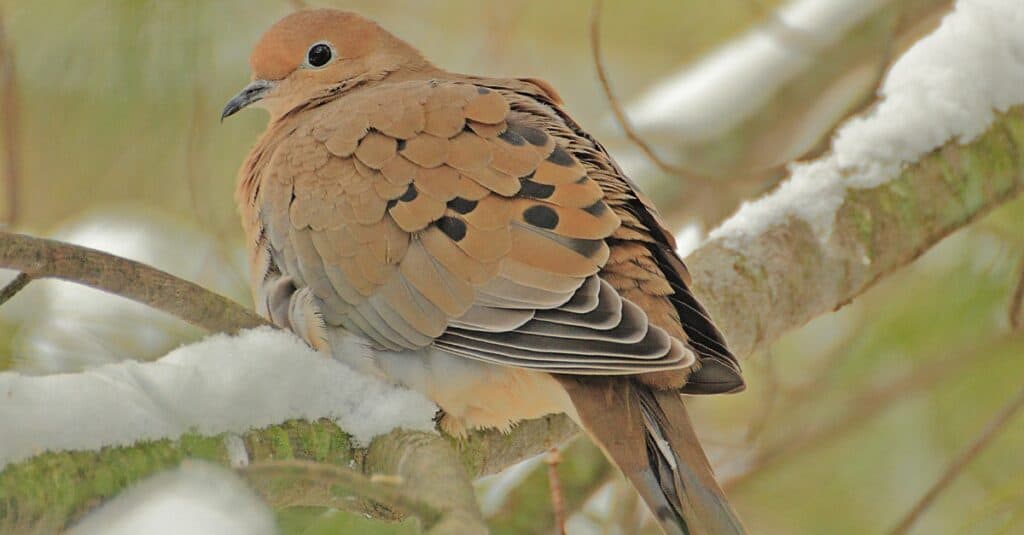
Mourning doves can be identified by their brown plumage with black spots.
©iStock.com/gregvandeleest
Mourning doves are an average-sized species of dove with slender necks and small heads. They can be identified by their soft calls, which sound like crying, or by the whistling sound of their wings. They most often forage on the ground for seeds. Mourning doves have a specialized compartment in their esophagus known as the crop where they can store swallowed seeds until it is safe to digest them.
This species is one of the most hunted birds in North America. It is estimated that an average of 20 million are hunted each year. However, despite this, their numbers remain well into 350 million. Loss of habitat has resulted in some population decline, but mourning doves are still one of the most ample game birds. One of the less explicit concerns for the mourning dove is lead poisoning. Since they are ground foragers, they may occasionally ingest lead pellets left by hunters.
Males and females look similar regardless of the time of year. Both sport brown plumages with grey tail markings and black spots on their back. They have grey beaks and pink feet. During the breeding season, males may develop a purplish-iridescent coloration on their necks. This can be difficult to see from afar.
Mourning doves can be found almost anywhere except in deep, dense woods. They prefer habitats such as open country, sparse forests, or the edge of woodland areas. Males will choose what is known as a cooing perch and will defend this favored location from other birds.
Mourning Dove Nests
Now that you understand more about the behavior of the mourning dove and how to identify one in its preferred habitats, you can learn more about their nests. This includes the most common locations and how breeding pairs choose one, the building process, and an overall description of the nest.
Ready to learn more? Let’s dive in!
Location
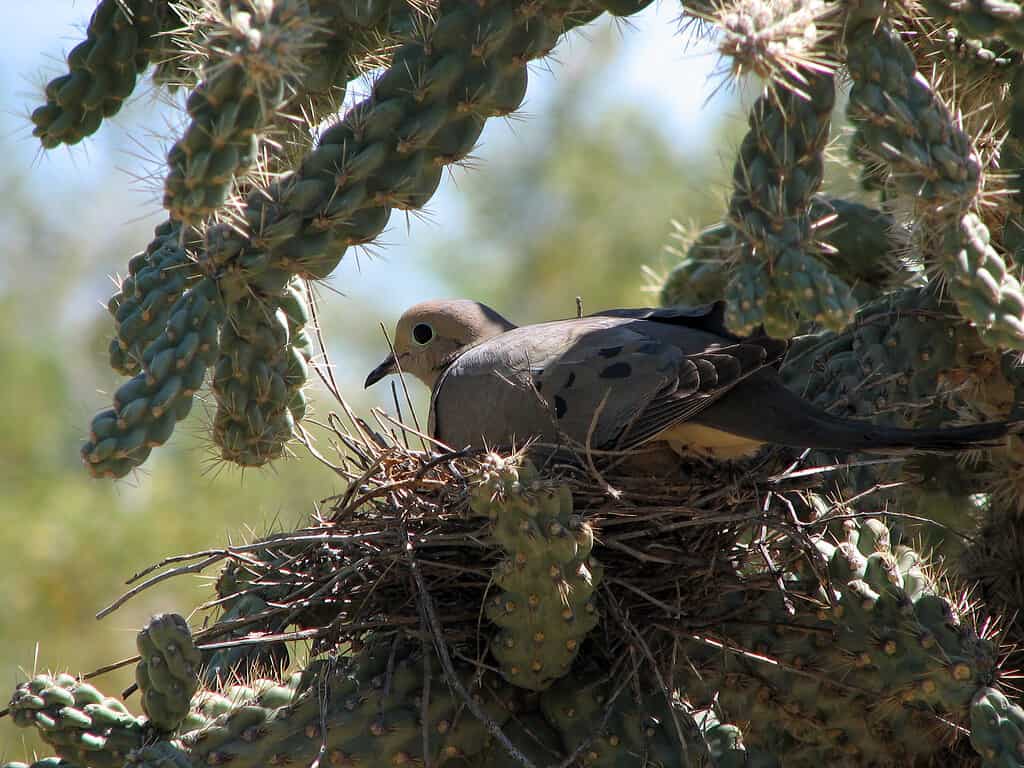
Mourning doves often nest on the ground in hot, dry climates where trees are scarce.
©Katja Schulz / CC BY 2.0 – License
Mourning doves can thrive in a variety of locations, and their nesting placement reflects that. Although they prefer to stray away from dense forests, they do often build their nest in dense foliage in their preferred habitats. Most often, they can be seen nesting on the branches of an evergreen tree, an orchard tree, a mesquite tree, a cottonwood tree, or even a vine.
In the western region of their range, mourning doves may also be seen nesting on the ground. This occurs most often when trees are absent, as is common in certain areas in the Great Plains.
Mourning doves are also not hesitant to nest close to human establishments. They have been seen nesting on window sills, balconies, gutters, or abandoned outdoor equipment.
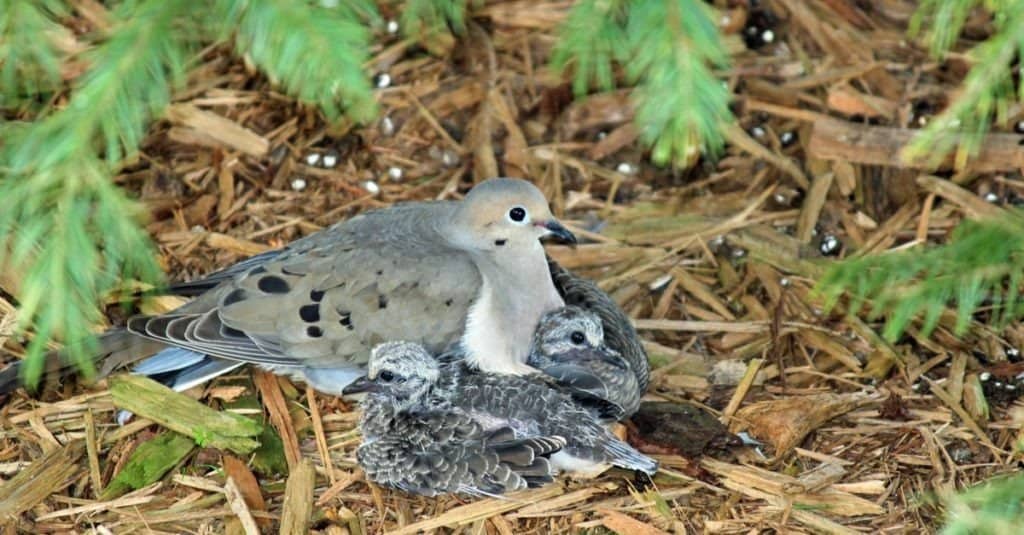
Mourning dove nests are often made of twigs, plant stems, needles, and grass.
©Todd Maertz/Shutterstock.com
The Building Process
Both the male and the female mourning dove will partake in the building process. The entire construction takes anywhere between two and four days.
During this time, the male will find materials for the nest. This includes pine needles, plant stems, twigs, and grass. He will bring these materials back to the female at the nesting location, stand on her back, and pass the materials to her. She will then weave whatever the male has brought into a nest. The final nest is around 8 inches across.
Often, the mourning dove’s nest is flimsy, built with small, thin materials. It is unlined and will likely lack any significant amount of insulation.
In some cases, mourning doves will reuse a nest from a previous brood or will even reuse the nest of a different species.
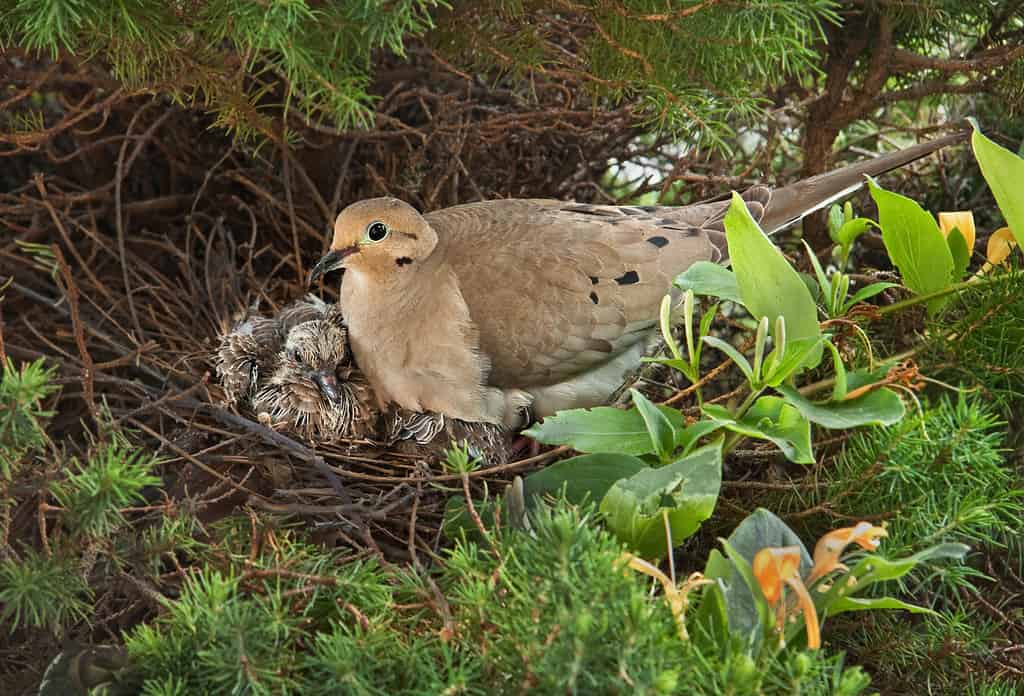
The entire nest construction process takes anywhere between two and four days.
©YegoroV/Shutterstock.com
What to Do If You See a Mourning Dove Nest?
It can be exciting to find a bird’s nest near your home. However, it is important that if you do find a mourning dove’s nest, whether it’s in an area near your home or in a human structure like a plant pot, you leave it alone. Although mourning doves are more tolerant of human activity around their nests than some other species, bothering the nest can damage it, harm the offspring, or impose unnecessary stress on the parents. One study showed that disturbed nests had “significantly…lower daily survival probabilities”.
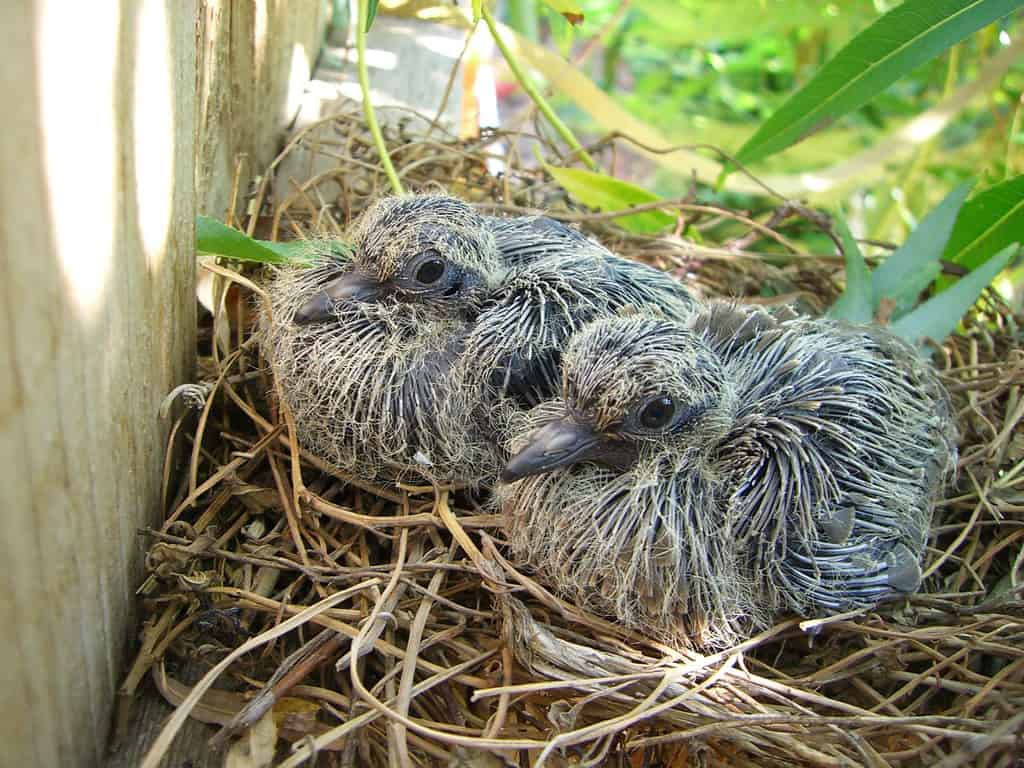
If you chance upon a mourning dove nest, observe from a safe distance and refrain from disturbing it.
©Jpabello / Public Domain – License
However, this doesn’t mean you can’t watch from a safe distance! Watching how mourning doves care for their growing young can be interesting. Just ensure that you’re watching in such a way that doesn’t disturb the nest or its inhabitants.
The photo featured at the top of this post is © Phoo Chan/Shutterstock.com
Thank you for reading! Have some feedback for us? Contact the AZ Animals editorial team.






